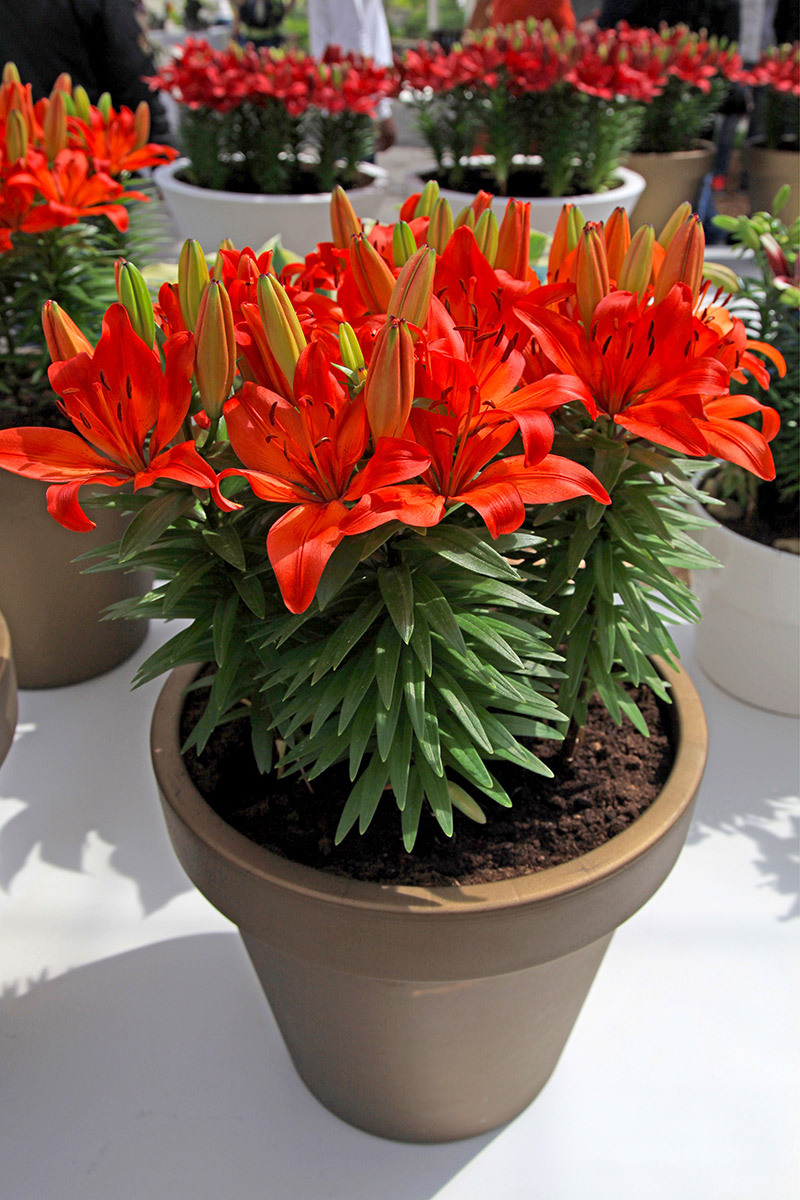Zestful Orchids: Caring Tips for Enthusiasts
Posted on 14/08/2025
Zestful Orchids: Caring Tips for Enthusiasts
Orchids are among the most captivating and zestful flowering plants that can grace any home, garden, or greenhouse. Their vivid blooms and unique structures have enamored plant lovers for centuries, making them icons of exotic beauty and delicate sophistication. Whether you are a beginner or an experienced collector, caring for zestful orchids brings rewarding challenges and opportunities.
If you're looking for the ultimate guide to orchid care tips, this comprehensive article will walk you through every step. We'll cover orchid types, best-practice care, troubleshooting common issues, and expert recommendations to help your vivid orchids thrive with zest.
Understanding Zestful Orchids
What Makes Orchids Zestful?
The term "zestful orchids" describes orchid species and hybrids that display exceptional color, vigor, or intriguing shapes. Phalaenopsis, Cattleya, Dendrobium, and Oncidium are popular choices for enthusiasts seeking vibrant blooms and robust growth. These orchids are not only visually stimulating but also exhibit resilience when their basic needs are met.
Common Traits of Vivid Orchids:- Striking hues and elaborate patterns
- Distinctive flower formations
- Enduring bloom cycles with proper care
- Adaptability to indoor environments
Popular Orchid Varieties for Enthusiasts
- Phalaenopsis (Moth Orchids): Easy to care for, beginner-friendly, and available in a rainbow of colors.
- Cattleya: Known for their flamboyant blooms and lovely fragrance.
- Dendrobium: Offers long-lasting, zestful flowers and a diversity of species.
- Oncidium (Dancing Lady): Recognized for their abundant, cheerful sprays of blossoms.
- Paphiopedilum (Lady Slipper): Intriguing pouch-like flowers distinct among orchids.
Choosing the right zestful orchid variety to match your environment and care level sets you up for a successful, pleasing experience.

Vital Orchid Care Tips for Enthusiasts
1. The Perfect Light for Lively Orchids
Orchids are light lovers, but not all appreciate direct sun. Insufficient light yields poor blooms, while excessive sunlight risks burnt leaves. The majority, including zestful Phalaenopsis, prefer bright, indirect light.
Orchid Lighting Best Practices:- Place orchids near east- or west-facing windows with filtered sunlight
- Use sheer curtains or blinds to diffuse intense midday rays
- If growing under artificial lights (like LED grow lights), maintain lights 12-18 inches above the plant for 12-16 hours a day
- Observe leaf color: healthy, zestful orchids have light green foliage (dark green = too little light; yellow = too much)
2. Optimizing Watering Routines for Orchid Enthusiasts
Watering is crucial for sustaining zestful orchids, but understanding their unique needs matters most. Orchids are epiphytes, meaning they grow on trees and rely on humid air and brief rain showers in their native environment. Overwatering is a leading cause of root rot, so resist the urge to water too frequently!
Watering Zestful Orchids Like a Pro:- Check moisture before watering: Stick your finger an inch deep or use a wooden skewer as a moisture indicator
- Water thoroughly but sparingly: Allow water to flow through drainage holes, then empty saucers to prevent soggy roots
- Frequency depends on environment: typically once a week in temperate homes, twice in dry or hot surroundings
- Use room-temperature, non-softened water (rainwater or distilled are best)
- Mist leaves or use a humidity tray for added moisture, especially if indoor air is dry
3. Selecting the Ideal Orchid Potting Mix
One of the secrets to vigorous orchids is their potting medium. Ordinary soil smothers orchid roots. Instead, use a well-aerated blend such as:
- Fir bark or pine chips
- Sphagnum moss for water retention
- Perlite or charcoal for aeration
- Coconut husk chips
Select a mix tailored to your orchid type--for example, Phalaenopsis thrives in bark-based blends, while Paphiopedilum favors mixes with more moisture retention.
4. Mastering Humidity and Air Circulation
Zestful orchids love humidity. Ideal levels range between 40%-70%. Here's how enthusiasts can achieve this at home:
- Group orchids together to create a humidity microclimate
- Place pots on trays filled with water and pebbles, ensuring pots aren't submerged
- Use a small humidifier nearby during dry weather
- Ensure gentle air movement with fans, especially in stagnant spaces--good air circulation prevents fungal diseases
5. Fertilizing for Zestful Blooms
Orchids, though not demanding, require balanced feeding during active growth. Opt for a specialized orchid fertilizer, diluted to half-strength. The general rule: "Weakly, weekly."
- Feed actively growing orchids every 1-2 weeks
- Flush the potting medium with clear water monthly to prevent salt build-up
- Withhold fertilizer during winter rest periods
Repotting Zestful Orchids: When and How
Repotting rejuvenates your plant, removes decayed media, and encourages healthy roots. Orchid enthusiasts should repot every 1-2 years, preferably after flowering.
Steps to Repot Orchids Successfully:- Gently remove the orchid from its pot and trim away dead or mushy roots
- Sterilize scissors between cuts to prevent disease
- Choose a pot slightly larger than the root mass with generous holes for drainage
- Set roots in fresh, moistened orchid mix, keeping the base of the leaves above the media
- Water sparingly for a week post-repotting to allow root tips to heal
Keeping Orchids Healthy: Pest & Disease Management
Even zestful orchids face challenges from pests or diseases. Vigilance is key. Spot issues early for effective management!
Common Problems in Vibrant Orchids and Solutions:- Mealybugs and Scale: White, cottony or shell-like pests. Wipe off with rubbing alcohol-soaked cotton swabs and treat with insecticidal soap.
- Spider Mites: Look for webbing or stippled leaves. Increase humidity and wash leaves regularly.
- Fungal Leaf Spots: Remove affected leaves, improve air circulation, and use a fungicide if necessary.
- Root Rot: Caused by overwatering or compacted media. Repot in fresh mix and let roots dry out before resuming normal care.
Practicing good hygiene, quarantining new plants, and giving your orchids proper airflow will keep them zestful and thriving.
Advanced Tips for Orchid Enthusiasts
Encouraging Reblooming in Zestful Orchids
Nothing delights orchid lovers more than causing a favorite plant to rebloom. After the initial flush:
- Phalaenopsis: After blooms fade, cut the flower spike above a node (the small bump below the last faded flower). Sometimes, a new flower stem or "keiki" appears from this node.
- Dendrobium, Oncidium, and others: Trim spikes at the base after flowering; these types initiate blooms on new canes or pseudobulbs.
- Maintain a slight drop in night temperatures (about 10?F cooler than daytime) to help trigger bud formation in many vivid orchid types.
Orchid Display & Decor: Showcasing Vibrant Flowers
Zestful orchids don't just belong on windowsills. Embrace your enthusiasm by getting creative:
- Arrange multiple orchids in decorative planters or baskets for dramatic impact
- Use clear pots or mounts to showcase healthy roots--a hallmark of a well-cared-for, lively orchid
- Display near mirrors for enhanced light and a spectacular visual effect
- Mix orchids with ferns, mosses, and bromeliads to create miniature indoor jungles
Documenting Your Orchid Journey
Keeping a care journal helps you track each orchid's preferences, bloom dates, and any pest or watering issues. Over time, you'll fine-tune your techniques for different zestful orchids and even experiment with cross-pollination or hybridization if adventurous!

Frequently Asked Questions About Zestful Orchid Care
-
How can I tell if my orchid is happy?
Zestful orchids show firm, bright green leaves, plump roots visible in or above the pot, and regular new growth or flower spikes. -
Why are my orchid's leaves turning yellow?
Yellow leaves can indicate too much direct light, old age (older bottom leaves), or occasionally root issues. Adjust location and inspect roots if yellowing spreads. -
How long do orchid flowers last?
Phalaenopsis can hold blooms for 2-4 months, while cattleya and dendrobium spikes usually last several weeks to a month. Proper care extends bloom longevity. -
My orchid stopped blooming--what should I do?
Rest assured; it's natural for zestful orchids to rest. Continue providing proper care, ensure enough light, and try lowering night temperatures for a few weeks to trigger new spikes. -
Can I grow orchids outdoors?
Some zestful varieties thrive outdoors in warm, humid climates with filtered light. Avoid cold, direct hot sun, and intense wind for best results.
Conclusion: Growing Zestful Orchids with Confidence
Caring for orchids is a joyful pursuit that rewards patience, curiosity, and attention to detail. By understanding the unique requirements of zestful orchids--be it light, water, substrate, or nutrition--you unlock the secret to radiant blooms season after season.
Remember these core principles:
- Choose the right orchid for your environment
- Customize care routines (light, water, humidity) to suit your plant
- Act quickly when spotting pests or diseases
- Repot regularly to refresh root systems
- Document your experiences and be patient--orchids reward consistency!
With these comprehensive zestful orchid care tips for enthusiasts, you can enjoy the lush, vibrant world of orchids--transforming your home or greenhouse into a verdant sanctuary of stunning blooms. Dare to explore, experiment, and let your passion for orchids flourish!
Happy Growing!
Latest Posts
Achieve Long-Lasting Poinsettia Beauty with Minimal Effort
8 Compelling Facts You Never Knew About Sunflowers
Three Simple Tricks to Keeping Your Flowers Looking Fresh







